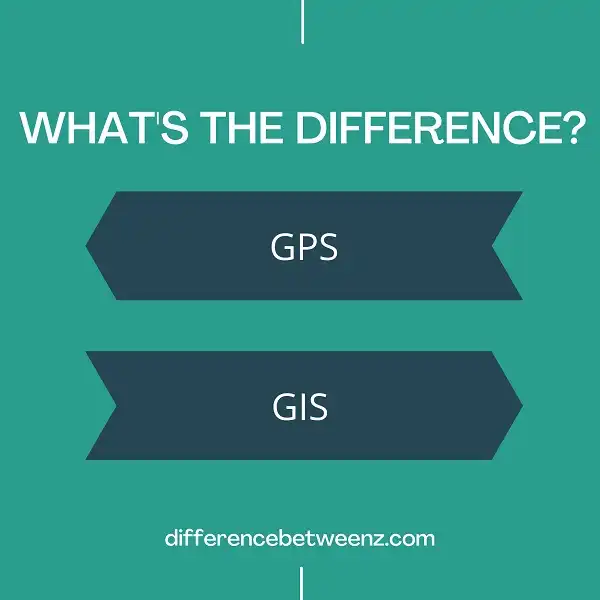GPS and GIS technologies are often confused with one another, but they are actually quite different. GPS is a technology that uses satellites to track your location, while GIS is a technology that uses maps and spatial data to help you make better decisions. In this blog post, we’ll take a closer look at the differences between GPS and GIS and discuss how each can be useful in different situations. Stay tuned!
What is GPS?
GPS (Global Positioning System) is a satellite-based navigation system that provides location and time information in all weather, anywhere on or near the Earth’s surface. GPS was originally developed for use by the United States military, but it is now widely used by civilians for everything from finding the best route to work to track the movements of wildlife. GPS works by constantly calculating the distance between GPS satellites and GPS receivers on or near the Earth’s surface. By comparing the time it takes for signals from different satellites to reach the receiver, GPS can accurately determine the receiver’s location. GPS can also be used to measure speed and time, making it an essential tool for athletes and coaches alike. GPS has become an essential part of modern life, and its applications are only limited by our imagination.
What is GIS?
GIS is a Geographic Information System. GIS can be used for anything that has to do with mapping and working with geographic data. GIS software lets you create maps and then analyze the data that is associated with those maps. GIS can be used for things like planning a road trip, finding out where the best place to open a new store would be, or even something as simple as finding out what the elevation is in a certain area. GIS software usually has a few different components: a map, legends or keys, and layers. The map is the base layer where everything else is placed on top. The legend or key is used to interpret the symbols on the map. Layers are additional pieces of information that can be added to the map, such as data about roads, or bodies of water. GIS is a powerful tool that can be used for all sorts of applications.
Difference between GPS and GIS
GPS and GIS are two terms that are often used interchangeably, but there is a difference between the two. GPS stands for Global Positioning System and is a network of satellites that transmit signals to receivers on the ground. This system can be used to determine the location of a receiver anywhere in the world. GIS, on the other hand, stands for Geographic Information System. This is a system that captures, stores, manipulates, analyzes, and visualizes data that is spatially referenced to a specific location. In other words, GPS can be used to find out where something is, while GIS can be used to figure out what is there. While GPS and GIS both have their own advantages and disadvantages, they are often used together to create more comprehensive data sets. When used in combination, GPS and GIS can provide insights that would otherwise be unavailable.
Conclusion
GPS and GIS are both important tools for navigating the world, but they serve different purposes. GPS is great for getting from point A to point B, while GIS can help you understand your surroundings in much greater detail. If you’re looking for a tool to help you navigate the world, be sure to choose the right one for your needs.


